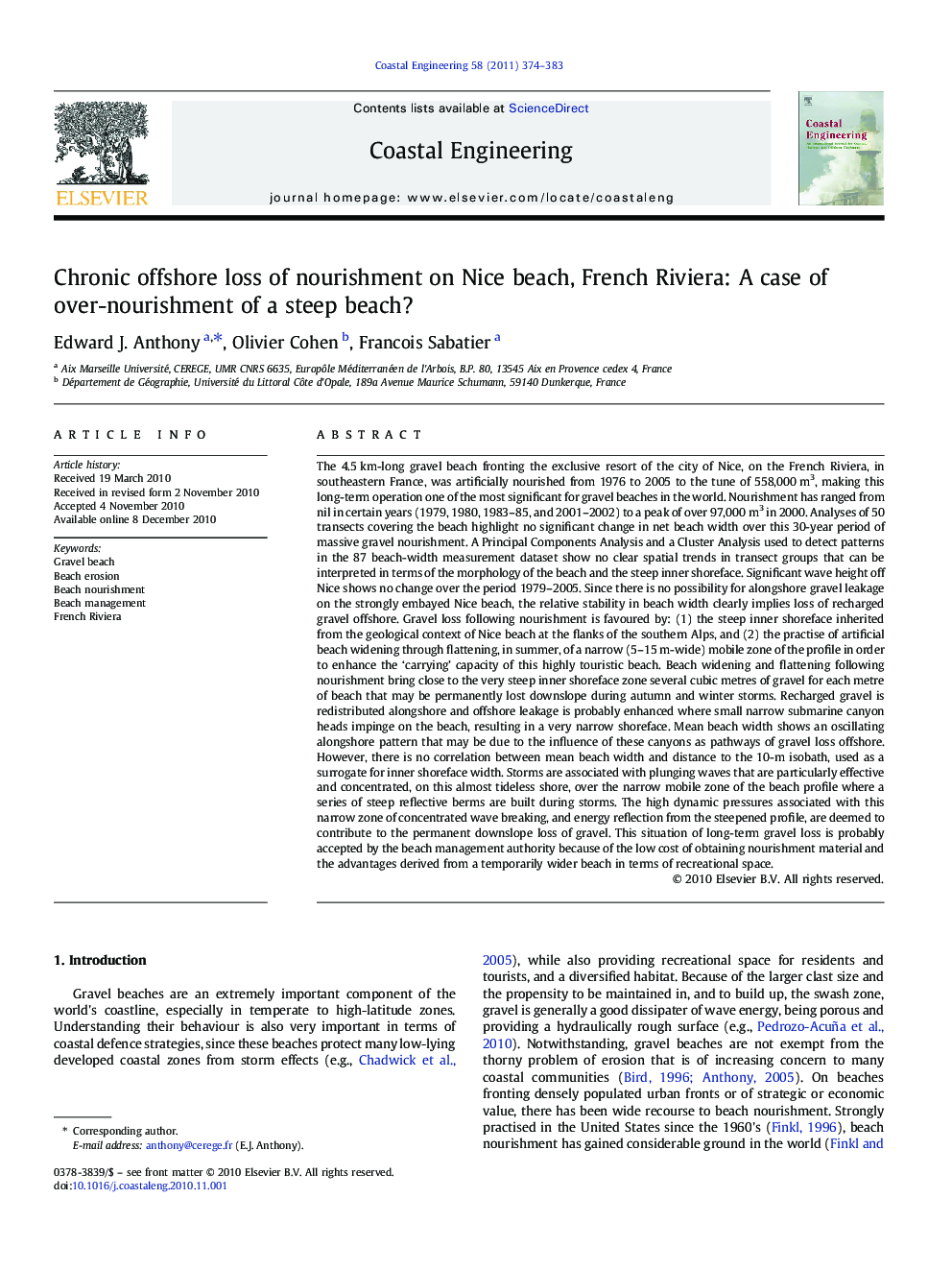| کد مقاله | کد نشریه | سال انتشار | مقاله انگلیسی | نسخه تمام متن |
|---|---|---|---|---|
| 1721075 | 1014462 | 2011 | 10 صفحه PDF | دانلود رایگان |

The 4.5 km-long gravel beach fronting the exclusive resort of the city of Nice, on the French Riviera, in southeastern France, was artificially nourished from 1976 to 2005 to the tune of 558,000 m3, making this long-term operation one of the most significant for gravel beaches in the world. Nourishment has ranged from nil in certain years (1979, 1980, 1983–85, and 2001–2002) to a peak of over 97,000 m3 in 2000. Analyses of 50 transects covering the beach highlight no significant change in net beach width over this 30-year period of massive gravel nourishment. A Principal Components Analysis and a Cluster Analysis used to detect patterns in the 87 beach-width measurement dataset show no clear spatial trends in transect groups that can be interpreted in terms of the morphology of the beach and the steep inner shoreface. Significant wave height off Nice shows no change over the period 1979–2005. Since there is no possibility for alongshore gravel leakage on the strongly embayed Nice beach, the relative stability in beach width clearly implies loss of recharged gravel offshore. Gravel loss following nourishment is favoured by: (1) the steep inner shoreface inherited from the geological context of Nice beach at the flanks of the southern Alps, and (2) the practise of artificial beach widening through flattening, in summer, of a narrow (5–15 m-wide) mobile zone of the profile in order to enhance the ‘carrying’ capacity of this highly touristic beach. Beach widening and flattening following nourishment bring close to the very steep inner shoreface zone several cubic metres of gravel for each metre of beach that may be permanently lost downslope during autumn and winter storms. Recharged gravel is redistributed alongshore and offshore leakage is probably enhanced where small narrow submarine canyon heads impinge on the beach, resulting in a very narrow shoreface. Mean beach width shows an oscillating alongshore pattern that may be due to the influence of these canyons as pathways of gravel loss offshore. However, there is no correlation between mean beach width and distance to the 10-m isobath, used as a surrogate for inner shoreface width. Storms are associated with plunging waves that are particularly effective and concentrated, on this almost tideless shore, over the narrow mobile zone of the beach profile where a series of steep reflective berms are built during storms. The high dynamic pressures associated with this narrow zone of concentrated wave breaking, and energy reflection from the steepened profile, are deemed to contribute to the permanent downslope loss of gravel. This situation of long-term gravel loss is probably accepted by the beach management authority because of the low cost of obtaining nourishment material and the advantages derived from a temporarily wider beach in terms of recreational space.
Journal: Coastal Engineering - Volume 58, Issue 4, April 2011, Pages 374–383